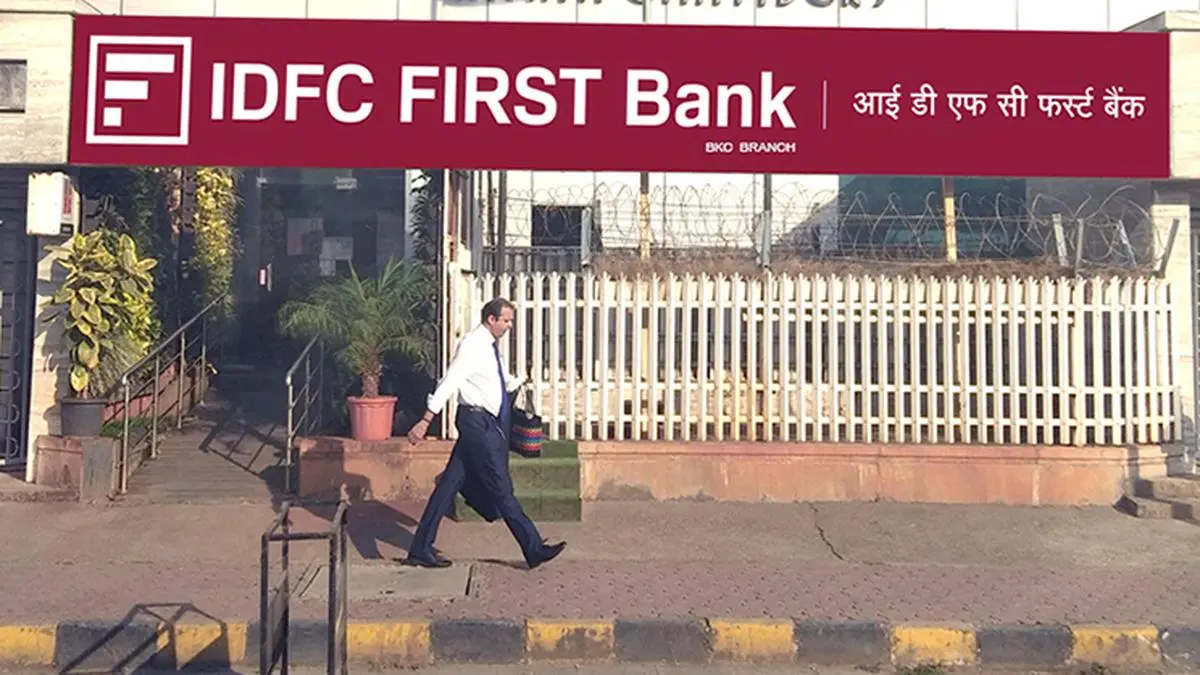 |
|
IDFC FIRST Bank's recent financial report reveals a significant downturn in profitability for the third quarter of fiscal year 25 (Q3FY25). The bank announced a stark 53% year-on-year (yoy) decline in its standalone net profit, plummeting to ₹339 crore compared to ₹716 crore in the same period the previous year. This dramatic fall is primarily attributed to a substantial increase in provisions, specifically linked to a rise in slippages within its microfinance loan portfolio. While the net profit experienced a 69% quarter-on-quarter (qoq) growth from ₹201 crore in Q2 FY25, the overall yoy performance paints a concerning picture of the bank's current financial health. The increase in provisions, a crucial factor indicating the bank's estimations of potential loan defaults, serves as a key indicator of the challenges faced within the microfinance sector. This segment, while contributing to the bank's overall growth strategy and priority sector lending (PSL) compliance, has evidently become a source of significant risk and financial strain.
Despite the setbacks in profitability, other key financial metrics showcase a more positive trend. The bank's net interest income (NII), the difference between interest earned and interest expended, demonstrated a healthy 14% yoy increase, reaching ₹4902 crore compared to ₹4287 crore in Q3FY24. This suggests that the bank's core lending operations are still generating substantial revenue. Similarly, other income, encompassing non-fund-based income, fees, foreign exchange and derivative earnings, and investment income, witnessed a notable 20% yoy rise to ₹1757 crore. This indicates diversification in revenue streams, partially offsetting the negative impact from the increased provisions. However, this growth in other income pales in comparison to the massive increase in provisions, which soared by a staggering 104% yoy to ₹1338 crore, highlighting the severity of the microfinance loan book's underperformance.
A closer examination of the bank's key financial ratios reveals further insights into the situation. The Net Interest Margin (NIM), a crucial indicator of profitability, decreased to 6.04% in Q3FY25 from 6.42% in Q3FY24. The bank attributes this decline primarily to a contraction in the microfinance business and a concurrent expansion of its wholesale banking activities. This shift in business composition, while potentially strategic in the long run, has undeniably contributed to the current dip in profitability. In terms of asset quality, Gross Non-Performing Assets (GNPA) showed a slight increase to 1.94% of gross advances at the end of December 2024, compared to 1.92% at the end of September 2024. Similarly, Net NPAs increased marginally to 0.52% of net advances. However, the bank's MD & CEO, V Vaidyanathan, emphasized that excluding the microfinance loan book, the GNPA and NNPA figures were considerably lower at 1.81% and 0.49%, respectively, suggesting that the challenges are largely concentrated within this specific segment.
Vaidyanathan’s statements highlight the bank's proactive approach to managing the situation. He acknowledged the current credit issues within the microfinance segment, characterizing them as “transitionary” and projecting resolution within a few quarters. The strategic importance of the microfinance business, driven by PSL compliance, underscores the bank's commitment to fulfilling its social responsibilities even amidst the challenges. The bank's significant growth in gross advances, approximately 22% yoy to ₹2,31,074 crore at the end of December 2024, further illustrates its continued expansion across various lending segments. The business finance segment, encompassing commercial vehicle and construction equipment financing, business banking, and corporate loans, displayed particularly strong growth of about 34%. Retail finance also performed well, exhibiting a 21% yoy increase. However, the microfinance portfolio experienced a 19% yoy decline to ₹10,997 crore, reflecting the significant headwinds faced in this sector. The bank's legacy infrastructure book also saw a 15% yoy reduction, possibly indicating a strategic shift away from this segment. The robust growth in deposits, a 29% yoy increase to ₹2,27,316 crore, demonstrates continued confidence from depositors despite the reported profit decline.
The decline in low-cost CASA deposits (current account-savings account deposits) to 47.7% of total deposits from 48.44% in the previous year suggests a potential shift in the bank's deposit mix. This may necessitate adjustments in its funding strategies to maintain optimal profitability and liquidity. Overall, IDFC FIRST Bank's Q3FY25 results present a mixed picture. While the bank demonstrated strong growth in certain segments and overall advances, the significant drop in net profit due to higher provisions in the microfinance sector necessitates careful monitoring and strategic adjustments. The bank’s optimistic outlook regarding the temporary nature of the microfinance challenges and its strong performance in other segments offer some reassurance, but the impact of these issues on future performance remains to be seen. The coming quarters will be crucial in determining whether the bank can effectively navigate these challenges and return to a more sustainable path of growth and profitability.
Source: IDFC FIRST Bank’s Q3FY25 net profit down 53% at ₹339 cr
